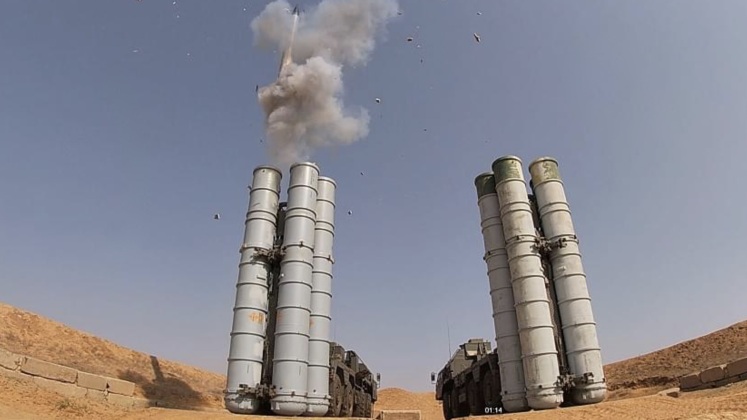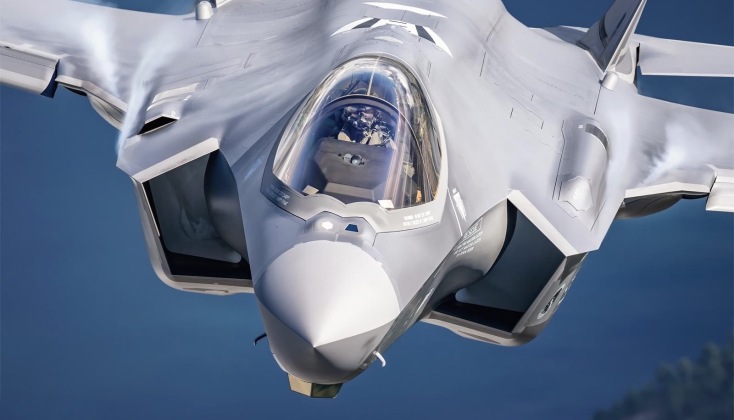News
American F-35s and Russian S-300s Are Duelling in the Electromagnetic Spectrum Over Eastern European Skies
American F-35 fifth generation fighter units have played a significant role in NATO campaigns in Eastern Europe against Russian forces, as the Western alliance continues to play a central role in the ongoing Russian-Ukrainian War in support of Kiev’s war effort. As the only post fourth generation fighter in production in the Western world, the F-35 has a unique place in NATO and is being fielded by a fast growing number of members, with Norway in early 2022 having become the first country in the world to transition its entire fleet to fielding fifth generation fighters by replacing all its fourth generation F-16s with the F-35. While the U.S. previously produced the F-22 in small numbers as a heavier fifth generation fighter better optimised to air to air combat, the F-35’s capabilities are better suited to current missions in Europe due to its far more modern electronics, data links and sensors allowing it to build up a picture of the battlefield in Ukraine without entering the country’s airspace or intervening directly. The F-22 by contrast struggles to share data with other kinds of assets, and lacks key features such as distributed aperture systems which improve the F-35’s situational awareness.
F-35s were forward deployed to Germany’s Spangdahlem Air Base from February 16, 2022 shortly before hostilities in Ukraine broke out, with the U.S. Air Force 388th Fighter Wing and the Air Force Reserve’s 419th Fighter Wing being the first to arrive in the theatre. Although the F-35 is not a combat ready fighter for high intensity missions, the aircraft were deployed with a primary mission of collecting electronic data on Russian positions and in particular its surface to air missile assets. Although Russian air defence systems have played a relatively limited role in combat over Ukraine, they have been highly active providing situational awareness over the country’s airspace and in some instances been employed to destroy Ukrainian aircraft. One of the most notable was the downing of a Ukrainian Su-27 fighter flying over Kiev with a Russian S-400 air defence system based in Belarus in the war’s first days, which set a record with a surface to air kill at 150 kilometres. The F-35, although more limited in air to air combat, was designed specifically to counter these kinds of air defence assets and deliver air to ground ordinance making the collection of data on systems like the S-400 particularly useful.

Regarding operations in Eastern Europe 388th Fighter Wing Commander Colonel Craig Andrle elaborated in an interview over a year after his unit was first deployed: “We weren’t crossing the border. We’re not shooting anything or dropping anything. But the jet is always sensing, gathering information. And it was doing that very, very well… We had all hoped it was going to work like it’s supposed to, but then to see it actually perform very, very well in that role was great.” The commander added that the F-35s faced challenges when encountering Russian long range air defence systems, noting: “We’re looking at an SA-20. I know it’s an SA-20. Intel says there’s an SA-20 there, but now my jet doesn’t ID it as such, because that SA-20 is operating, potentially, in a war reserve mode that we haven’t seen before.” The SA-20 is a NATO reporting name for advanced variants of the S-300 air defence system operated by the Russian Air Force – namely the S-300PM-1 and PM-2 variants, which were produced in the 1990s and 2000s preceding the more advanced S-400 which is designated SA-21. S-400s are very significantly more advanced and outnumber all S-300P models combined in Russian service, with the systems having been acquired on a tremendous scale and two new factories having been set up primarily to facilitate greater acquisitions as well as the large export orders which the class has received. With Russia fielding fifth generation fighters in very limited numbers, it relies much more heavily on systems like the S-400 to counter new generations of American aircraft.

Both the S-300PM-1/2 and the S-400 are well optimised to disguising their signatures and countering electronic warfare measures from air defence suppression aircraft, of which the F-35 is considered one of NATO’s most formidable alongside the U.S. Navy’s E/A-18G Growler. The Growler is better armed for such roles, and unlike the F-35 is fully combat ready without wide ranging performance bugs, but it is also made much more vulnerable by its lack of stealth. 388th Operations Group Commander Colonel Brad Bashore noted regarding operations to collect information on Russian air defences: “We don’t have a ton of weapons where we can decimate the entire space. We’re sharing data and making sure that everybody has awareness — surface-to-air and air-to-air — of what’s out there in the environment.” He added: “They’re doing the same thing that we’re doing. We just looked at each other. … No direct interaction and nothing that was unprofessional on either side.” Close encounters between American and Russian aerial warfare assets are far from unprecedented, with Russian forces in Syria having gained considerable information on the operations of American F-22 units over Syria from the mid 2010s, although F-35s did not play a major role in that campaign which was speculated to be part of an effort to conserve information on how the newer aircraft operates.












